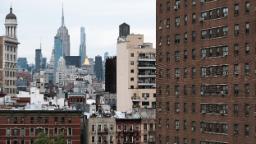The national median rent hit a new record high of $1,879 a month in July, up 12.3% from a year ago, according to Realtor.com. While rents have been hitting new records for nearly a year and a half, there are some early signs that the market may be starting to cool off: July marked the sixth-straight month of moderating growth, retreating from a 17% year-over-year rent increase in January.
Still, rents rose by double-digit percentages in all size categories in July compared to a year ago, with monthly rents for studios up 14.3% to $1,555; one-bedrooms, up 12.2% to $1,745; and two-bedrooms, up 11.7% to $2,103.
The South and Northeast have seen the largest rent increases. Miami, where rents were up 26.2% from a year ago, saw the biggest increase among the 50 largest US cities for the 10th-straight month. Miami was followed by New York, Boston, Chicago, and Orlando.
Many renters have been scrambling to find a rental they can afford or opting to absorb a rent increase on their current place. But moving into a new apartment has been costlier for renters, according to a survey from Avail included in the Realtor.com report.
Renters have experienced bigger price hikes on new leases — an increase of about $300 a month over their prior rent, on average — compared to renewals, which averaged about a $160 a month jump.
“Whether in a downtown area or suburb, staying put or making a change, renters are stuck between a rock and a hard place when it comes to affordability,” said Danielle Hale, Realtor.com’s chief economist.
Rents rising everywhere, even in ‘affordable’ suburbs
After being hit hard during the pandemic, urban rents are climbing slightly faster than those in suburban areas, with rent growth in cities up 12.8% compared to an 11.7% year-over-year increase in July for suburban areas, according to Realtor.com. That’s a reversal from January 2021, when urban rent fell by 2.5% year-over-year and suburban rent grew by 3.9%.
Still, the rental landscape isn’t back to its pre-pandemic picture. While cities are still pricier, the gap between urban and city rents has narrowed. A renter would have paid a 12.4% premium to live in an urban area in July 2019, but that premium was only 5.8% — or $107 a month — in July 2022.
“Compared to three years ago when rental price premiums were typically concentrated in urban hubs, renting is now nearly as expensive in the suburbs, where the rise in remote work has driven a surge in demand,” said Hale.
She said the days of lower premiums…
Click Here to Read the Full Original Article at CNN.com – RSS Channel – HP Hero…

